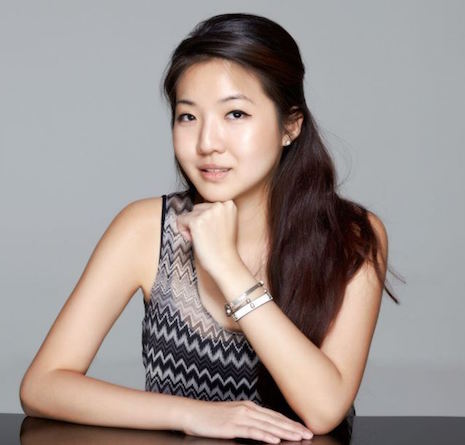By Lydianne Yap
Given the importance of China as a market for luxury goods, there is no shortage of reports from business intelligence agencies charting the performance of luxury brands in the Middle Kingdom today. And as a country with one of the highest Internet penetration rates – a recent report released by the China Internet Network Information Center (CNNIC) put the total number of residents going online at 802 million, or 57.7 percent of the population – these reports are naturally digital focused.
However, there is one key area that most of these reports are unable to offer a deep dive into: WeChat official accounts.
With more than a billion monthly active users globally, WeChat is the main social media and mobile messaging platform in China. But there remains a lack of publicly available data and statistics on the performance of luxury brands on it, making the exercise of benchmarking and objectively evaluating one’s WeChat Official Account performance near impossible.
Which is why the freshly released WeChat Luxury Index by digital agency DLG (Digital Luxury Group) and marketing automation specialist JINGdigital is key to understanding the landscape.
Based on a study of more than 100 luxury brands with community sizes ranging from 10,000 to 1.5 million, the report offers industry averages of key WeChat performance indicators. It throws the spotlight on three main areas: content, followers’ behavior and acquisition, and engagement.
More the merrier
Unlike its Western social media counterparts Facebook and Instagram, WeChat delivers brand articles straight into the message inboxes of its followers.
Depending on whether a brand opts for a service or subscription account on WeChat, different message sending styles are used. The study focuses on service accounts as most brands, luxury or otherwise, tend to choose this option.
Under this model, brands can send up to four message pushes a month, with a maximum number of six articles each time.
However, most luxury labels tend to opt to send only a single article with each push, citing a higher perceived open rate for the articles.
The study debunks this belief and reveals that across the brands surveyed, pushing multiple articles at a go actually generates a higher overall average open rate.
While the total open rate for single article posts is 12.8 percent, it is almost 50 percent higher for multi-article posts at 18 percent.
 Open rates for single and multiple articles on WeChat. Image credit: DLG and Jingdigital
Open rates for single and multiple articles on WeChat. Image credit: DLG and Jingdigital
“Brands tend to get fixated on the engagement rate per article, instead of the average engagement rate across all the articles in a multiple article push,” said Pablo Mauron, partner and China managing director of DLG.
“Single article pushes naturally have high readership numbers because it is the only piece of content available to followers within that push,” he said.
“But if you look at the cumulative readership of multiple articles within a push, it is much higher, and brands should take this into consideration, especially if they have a wealth of brand content available.”
Not all about the money
As with any social media platform, your content is only as good as the fan base you manage to reach. Which is why brands often spend top dollar on advertising to gain new followers – and it is no different on WeChat.
While the proportion of followers gained from such channels are significant, the WeChat Luxury Index shows that the search function within the application actually accounts for more than 33 percent of the total recruitment, surpassing that of Post Ads or Moment Ads, which are WeChat’s advertising options.
The second top recruitment source is that of QR codes, which are often deployed by brands in offline scenarios to drive traffic online. It accounts for 23 percent of total recruitment.
 Recruitment sources for followers and acquisition on WeChat. Image credit: DLG and Jingdigital
Recruitment sources for followers and acquisition on WeChat. Image credit: DLG and Jingdigital
“While this does not mean that brands should start vastly reducing their ad spend, it does mean that they should take a closer look at their WeChat follower recruitment strategy,” Mr. Mauron said.
“Clearly, more attention should be paid to search and QR codes,” he said. “While WeChat now offers a way to optimize the former with its Brand Zone, the latter requires much more commitment from the brand to fully leverage.”
Mr. Mauron explains that the key to driving QR code recruitment is in devising a coherent offline recruitment process and consumer journey in brand boutiques.
The quality of the followers garnered through this channel would also be much better, as they clearly already have an interest in the brand.
Menu, please
Gaining a new follower to one’s WeChat official account is half the battle won – the other half is in engaging effectively with this said follower.
The report reveals that the top engagement activity performed by followers is clicking on the menu button within the brand’s WeChat account.
This accounts for 62 percent of the actions executed, followed by that of messaging a customer care officer or brand representative through the WeChat dialogue box (19 percent).
 Active fan engagement rates on WeChat. Image credit: DLG and Jingdigital
Active fan engagement rates on WeChat. Image credit: DLG and Jingdigital
Seeing as to how this is possibly a potential customer’s first encounter with the brand in question, greater care should be taken to develop menu features on WeChat, Mr. Mauron said.
“And this exercise is not about packing the menu with all sorts of information about the brand and its offerings, but ensuring that the brand’s key messages are properly showcased in the welcome journey,” he said.
For luxury labels looking to better gauge their WeChat performance, the report offers plenty of other useful insights and data.
But knowledge serves little purpose when paired with inaction. The onus is on brands to make use of this information to refine their WeChat marketing strategies.
“Luxury brands should not think of WeChat as a channel exclusively used for marketing and communication activities, but embrace it on various levels,” Mr. Mauron said.
“Organizations need to change the way they approach it to fully experience the benefits of the platform,” he said. “More stakeholders should be involved in this process, from those handling marketing and communications to retail and CRM, or even supply chain and virtual merchandising.
“Only brands that are ready to fundamentally challenge and transform their approaches to address changing customer habits and incorporate new technologies are likely to thrive in the industry.”
Reproduced with permission from Luxury Society
 Lydianne Yap is China editor of Luxury Society
Lydianne Yap is China editor of Luxury Society
Lydianne Yap is China editor at Luxury Society and marketing and communications director at DLG, parent of Luxury Society.
{"ct":"zs3HTe8J1CAXinOwA8f0ZzPHitLjrqzHUxLXVg3LjzYgXLTBACBTcWeP5zkipSDDrfWELT5Uui5l4O5fM1tuNNw1o8kXVUQJhzcsw4ZeASaMjuDmcMKND\/MDHhcGGyOq8cMiW4CZgC39vbFv1wj6IsrB1j7GZngG8lU4SYp0ShIa\/KInvpu1muqkh\/+1DWe6ughfPichTaGmaBCntsd\/+lzjjA1COjZsFq2x1qtPbIH0KAm5RRRCoKEn+5th1\/rLtSGK67oQpZKfOaLB1yZId0KYFhWf5eqLJ68Q3+7g3MCiFgjWq1W4oXvVYnXKwgRmqe8bZvuCqyeu0S6HJk7Bf9dKQadXIVmHW6fGuI0yePf8obJF6yzlZy+R8gtyIvxquOouItRVSlBTotbrLAJzaxLDG64Ji9jl7I5p3HhZ2pLbphXcAP4oqc5n\/rq8Ij\/aPAawVNcPHyOBjumOWfHznfWQkc5Z8ktlNOX4GvgDxC1EPocrw2EDMmUnV1fFoRlo\/BLtsKJ6aU6Fkn2uHwTCdhbIIGTpuoAhyEG3ttPfcNtO\/PlQ\/m48FpMBNuWtqz22nya1U9Zm7XLdlPUxXEUVL829g5CbU+Tr6+aAHdv5LfFX6VnRXYTMRjQP9p+LS1Es44thIsFDVoRt+X+c3ztyd26u1+AXSmLI85+CdKpwNx2QZEphhPtxvf12PhTap\/cYrpfVts\/CVWkUNOPWDKVPXGo0nk4gN8UMJe+uF4i5WNyZpvnXPxrE9qqRLj3Y4IWc\/7eups9DeHYhdtZM4ykfMTiX3dxOEETGBGgb3IPXjfUSnOOE8uRNOAQ\/KpxSEiDqcvrDZ3ZoTB6iI0nBFphu8hdBZO+g6jggqfD+jL33JjFHMkwE9CVt8v6IPaKKeNhnHT0L0rjulpOa+vwiEXbaZu5ygfp9HAxUWfvSSNrxN0ejAEjnnW\/G3HNY0u0lrM7J8\/lkbNiikafxAqgZb7YQjF\/lMrV1G\/QzzKHOXyB1zj86\/Pj18b6ly7mVVCnFUrzTwJ3Epj6lGFMW+oXSYiHuurngmHwnlZqYhoalT5rd\/6Ceo4swnDeKwprhIH\/IxLiJm65nbkMJbKWds0IXTKLbN3z7AA+bAIIRtp463OXbMb1cXDmbKVipLsNt9tybuVzuUv9OR3O1Gj2edjQwn+GZ2VxIuESB1ydWyvtZI27DlgYlrPDXuu9\/a4XvJIps16GPJ\/mUDGus\/3hW9ZEdbLqk+A9lpbK5HvAl2WSEpnfbAWaXu2LH7mZUxKj6sws5h5RnExnsh2EenuvJL9Nzp8jK1VqhRJ4+4siDlnTqyRT3vsyhFKl6vPi\/WYroRwm7j86WASU5TawaUOwkG72ruQ\/8wUNz1ZS80zbA9QO6SngarRUa1PY36TqXkoyr8x+DzlkcR2Udif3rvXXXmmJnyyHltE56YYzJMxThrY2zcptJCZecS5dtIQt+nYXqU7H3YmnnAhcXhC5eR0tTv3NO8AOCVBFgWGORZwgGd+tuf3NksHVxq4wUg43QUSrLjQvf\/+93uVC7WfQopW38nzw0ieEAXN8pzfIzlziAIy1YcoavXxuRQZeNsQwnGqNIpVeyYOwdxPkijCO3pJSdt6r9L\/ZnVJYYl+YMBFtZKTrVmngtg6+vb0KRkBcuMirjxgt57yu4Pi0oxKjAeOIzssSpi2q4gXLz5IBGFHNaJ\/PKyGuVQoRr9PXIutv\/htK5j2imHn\/zjmgUNHKNPhlMgHo518jWBwbM6qBy7nag7KYkKbhwqFYcOzehN6CFA7IZB+rs\/0m0Nz6IfyW1e9vXR3DcWO3oAKRHoq+V1MOc57Fhnpj2k7jMxJOi4zvOYj1lJQaKKzcZOY2EHUREh9Juvgzz3zwWA3\/GHmzEe4M9NXucSsbB7F66nwCGRTS5vyUHXk9hp68OZ9OFt\/JOUwMWQEyvc9g9J3qSKVx+iBiJryU4a62b1SUiBb+D16CRv026J01a91yjTySio8F7RTwgr8O1vzRyheKlbDw7roRCtzSg7ohPsV\/5Rx5hg1GtruvWJq6r422UJMrO5viD6XLFeKL2q3Tu6\/paFdzcMa7\/+o48MxM7q\/TnXNLD8S4ZVZ0JOiPR0Ufhs3JNN1rfUpvhcADpGgxfbtDfBcb33M7nqMF15YFiZ20lKZoIWVNGg4QtIEJaGpwpEiXhHzXkmqfL7+KkIiOApISROA51uAMhfDf+QFDR25ceat5AJjlIo\/bkoNc9kK6LvcqHDFRCXzHBx69kenGpmVN7e+dYnXMK+5QiG\/5RLxrfroEqm2Z0O5YYyQHzgVGkNcPUmWjRd6heYE6cTUTMcr\/7YRHc06uSIAjD8IGqsCqJKzNKvP\/NbbyUKNQfth2aP3GwMrD6v2cj9yhkARlpOg2bKzfQ\/Y1O0OF9y1Q5nsN2jwn8dcIgscTyh9AWm7yXB28cGA8uD2jt87M6wr84N7OeiVAmtrjtRZoDf4dtK1bt0EntDcz9FUI0yR5DS0DVajk33I8VwOAIvpULX7CYfwlqFYLczTDViPb8I0sY4pTphmbY5VPBaSw+QL5UnP3lj03V6TfvFrsoy9\/T1Wdc7fs9qofui\/PY1X14aDmV9ZR+STrk46TB4Z03s2YJG\/7Ein4j8xwLFnuzWqbzSPVjJQZVmNRU31IhJaVR4msNjvsOCgVGLNZMhvq0tkZe\/dwRpPtHFsxq4DV4bjLjYVvKLfaiD4dv4IL8Y0RpoYIr3ScnaJne4ESO2Uha2gQETNqj+AUfKm+1knY\/w+rCiZXf6iNHocLnZcFGmbVnUPts7p1\/9HTITAjSwsAK40NTT20vbOppLNO01Cbw17YliYq2d5ktaTI9DWcFFwKu6B3x0onKZTEvER\/jWnxkrAijoLdvZ71mm32ex\/kxaZU\/Qa712K\/nclBZYcz3zzxc3IBI2QRFJi7lACNYcwuhomoZOXE1KpJyQDe8jFP+DUvfp1j9HiUEEEoiGDSvWsQ4tKcX3AUM1ssPnf+O\/\/mWEuzI0m7efhU39AJ79+vp5Jn1l5F7y9HfjVjHWo1evgvvtDU8L2p8dxIXeerQwUsSr+6R7aF2KZ73nKxrbDIk4ZggviiwUScg6u44LdMMl7oPPj+2AeiV+dKUfKUeLlQAwE+XkwyoaBD8cBWffrkUoaDHYkGV4k3x4RIMZVFz1z2+uMBCCen2FGTwEJCAU3+Y2mYLgXtazp2G0L+JEtHMFdl6x8YUbw0hqpOT9Zx6skjdcacWsEfbOVYHxTzsDKKIYAecmFNd\/dtx8E7w6MkvR+iXhIRAJyKU0l00tk6fEncSvirFi8CRu33gtZ8am6uUw2BxhdDhn8IaQaWrSPTQes1gZdIBCved575YhoAWGulQlJUUBzpSJGP1cT7u6dNbDd+Bq\/7eekPPlROdHAwumeeyowm6+AEzyYEslPGRNKft6HTPHBUsP7l48P8jtxs5uHpaIqM0Sq\/YVzbljSll+\/XiWPBs3qR\/aU1g8rtfcuIOhDp\/fYgPVlSWyCBPIZjtRH+8sCy+PMTsJyeE3bJKnWPWXZh3AGUwNQ6BHZzpBuiHrIcB1CHIRNdxjOGRUnO9hlMfd8DOamhiT2wxbTedBgBgZYYfZP0JZvTr9lR8bo4IYpq5O6RUcSN6Mww1aUTSz7mheNqMOp6k0hmO9\/rTUar\/DdoORvdfWM5iU1bS+SIYDVVyPWSSl4k8QfAMxq1Vcd0HwqoFaeD4jtZZBnVx7OW02L3goH9TpW6neXGUrps4blLpJjAKaYTuZD1OXIyjkG+YHuvCZhWxzHzhjbfLPc0R4vGAb\/Ea7Ha\/KEZmLTtH0uGCNaLWllNgSholsthho+7YOTDlg3mqzcQRlOnTVowcbDyL\/tjXcIKktPun4AyAvgCgN6tsQgZLKJrMAICDsPnwEVhYIbPXAI6CZLt5afZf2Rc3eu6AkskHT3FDRGce+JTgtCT6U7+4mpZS9sn6Jp\/E3F\/VQ8GFkiLjwVVMi5S9m2wc8sy7rmlEIXqmCvzpNTO5A4LIIvUOwncKSWC2II4hBAVJ7jfk++K\/PlxBlZw\/fvioDBI2Pk3j4bCjNmYbhaLClsqsGP8HlJuCKWdKhZ+YWhrhdmjrX4CtjrCbLzP+UpkK7ep28NoXVM9LHUmEEvpf\/MNIFSnB3TsefQZOUhgTQHp7JWdmz+83OVOuFVZ+OpX6XuBmKSRdgxa1tp0pBVNAfG0PH35TSm7xwQC9D4XrjIBHZg59Yrpkti8BuCUAN2yACW2prG8wn7faluR9SCYW\/3my1IbeYOXlADo7lDH9R5HH2C0Ocxu1tJRj2CkF0LuFTvSOa7LdsvyuYhRSajZUaC\/mJsd83lQJxC4+UX2WFEy+KvuwRJ03esgO0x2HqIXeApdoKuxoqnMJGRNUnR8s27EZbItp\/J3V8SQ9tDb0yIyISczRmYOA7s1B66Ixs6EMoZBZvZBi1el1PhSD+eYTdsKrlYW+X8yx531iP+BmFolcz6l8zOjfkbp2fis6X74mHG9Lhxvi5EjqueH6qwhMSGgTVBBo5Wd2sK4JH1sY9ko6eA\/CpaVOF6YqkOk9Xf6Ma\/QN4yM5E1K4NP67BJJBn8gs1l9Eyx+P4AJj\/jsBLbKWHbHSBVEfDcF023bU4Edlgw\/sci3lcuPVdMFR\/aIX4jN9Qd7tFH9PH7kafT+4HrtFm8A2RxjXgl\/KFJab1nVVUhXDigFDmfqZEONvdD22zh6aa9r\/q4VcnpnzyRHqUC59ZVg\/QP962k+fLLuzIh+\/kzQcg5IGyTnJaID89aaB22yn4kGuXXlMRj49YtHQIlCSaXLNnEJ0I3sjzJLHIDPdoAdv3dmeF3jUFnqLIHdgDGHNBeg\/cJX448AsknVGktQy+0aPSHntLGdgjE9S5eAEUXbBLGoIOvB7\/VL8huIWjYoHM9Jh1Yn4Atc9wRoFhPFNnQuc6+rHE1KWnDsDv3RKV0YGHT1hCbHxVtFMFR3sOdH8fyP91ABGUZyaN+kq2GMOGNPbdQf20tZ5yBidCKaRsHFR1KPd2JfcpYZYOkhEBSyORjd6nsaxzIqmFnsTzNVUCQGX4jcEbxgTpvGdOAVSS8FUPrBNQVaS9DldrMEj0QQBtYGcMWOCvkcanng\/HVtBqvYgfNj88GkGhVWdyjKTDch9p5IDP2nS1iP58NRPaEyEp7tiA7\/pau7ZA8g\/R\/5PYMB0W34AqV0nbkbT+\/N+0wVe3a6\/MBtd+2GbYYmvvaEp5\/Cx6Wq04Eba1InqfaR2y7ioIfgHtjY9Mc5OUKt4StLO1x7TDIHPkDcD0a4aIvfJaKKjPSEeJFl6CrrvHWw3BOR1Br4cep3lDMXaBvFVXM5p+m7L9a37qctq4fLIbvXY3ATh+eGG6cSGe3JguomdxL2zFzc9R3YTE9lzjQEULZ\/gW4wrIOOENWr9MCeSMpRgSch4jC0\/bmKRZ\/tABAlsvl\/+eOIt2rpbhDj\/eRnzsOh8wOXy5WEg8Wns94xnbZOxNrySljWbqod2m2xiJLdfJCjxiFiXW\/gPrJBkt+fz45ZaCJSYOa6Wvm+awRmXejbpwnCUMoarB7bcYYdkWAe3\/o9i1ndI47vJVGQzMopsZG3JqvCS7Jz5cxe2JvzSPh77DL6d+eXw63Di7H6jPVn1Ub33gSvdpSNGEeX4gTSHU8I3OlvY0E+bbPyMDiWdiMN9a8LAEKEdjthK6UAkzbuBQZRh8TYnILDeRedM\/WdwkFttb0lFZmPtRz+\/CDGKn27jf5WdhsU7SsgSU8p0JnCRhlhBqgUzP5+nCEiLWHl\/YB0Kj67l5RT3qYfYH8o8hpKhsZZSaBxWipPNvPwlXI43I3omaFWmCAUuSu1a0WRPj2ieGngdOsGYHwjqWWOvHU6yp\/MXjvEZ0ym9acbh+omuyOJIZQwJQTFyQRf5FXXgA8nsf5J+1YRGIEfNNYNkNpUW0KKTqJ+lYQOxgFwYK2dC77278On6Bn3p9hz64c06dvb7Qdsu0viImXNCTZ\/vftAElz+\/SmJvqpm92fVrai3okji+SGghQCKZn5f4nDZSOrsCmrkXAakavgc8SGW4rpAVuS9xncUyKP1tCX9jKNKqfLI4o2DdKEL8RMeInXiFDMurWH22lfGdOwgeA5nkfd6LtNjrbE0xxbGhYO2a01Worsg9tWr66gvaf14aLiUnt7HJQTP\/ravtOKXR\/Aam3adXQkykFK30AGmCyZF17m1208xlPyRCK52Ps\/yNhuLX6T2n5ZUVyoTNoTagGb69k2AEQkM2QztTPzQN3gF9l0Qvoyf37BsDT9bvEX5+waPviDO647ilHTHnIjOEvztUPsOFA7vP8k5yQ3p1Tv8iEnp2uLS7dl62+MpTxBFYMWgJl0BFTcaVtIENmJjysxu8qJRHOg9Hbsuw4clf3homZQzaqVB7IBTKcSEg27MzfUkFY9vm4vmI0I+Z1w45oAO1y8PYnfYzzu8IbrGxmGglnbJm0r+0HHoIa9FHjHgLU1eXfC2kq0c9zGAnEmw4sfwv07L\/ulz0z+\/W\/rNJhKOirDNapUO+T+TeIVAcnRjFy5T\/0tvvh++XSj\/8qXN4o2Ue0XBdMdwDX9OKvCnV7s\/Kw4rb\/mLzoTYzK161IxEHg7NtJp78KlqtN1KW4HaPgBX8xkymxJtdweBM3HIVHarFViq1W6XoEMwYl5zZXd3Dlx1MUvEt6lmwuygDH+rT1gkWDz\/3+iFZ8JudjLeChqXBOALZdWNJc+UJi30YCFlGwjjmDrUQ1WIG2y+JOmpjB6Yi+EZJI+PAbhB1EQ5M+44JQo0Szd+yYff4y0f+EYeOeIZm52ltxdwbHBF858aYyC8Z3R2272ah69x8IeYilmlGqUswIHMZiWMil+TGfN7Y6XkOtuFJF4JlYd4aVTl7l4UjoFEfaVE6Gun94cmVydIfYvRGgPwT09VtPiAvJr0rgqT12jqMQktTPZW4GaJCukSGKuxC3yNaR0CoESVfUgwwv1AycuhENJ3pWpbkl2PrF+u4+AkCR1ybJMfFUWwQl02t8bFRLpzZkhWwHdek+NK7XsTqC4wX6qFmFgj52QHvNu1RsRGK7gYPjpBFE\/vK6AvXS71NRE6x10lCqv\/dOX9y\/ndzl49KEr6tpF0nQa6NTenue8ay38zqJHtJa54JXN0UxkGeDhHHtu2gpnWurl3qARqF+yGnfBHJNFQfZckaCgx++xzt\/K6aSP2eM3LIvAKW5Nhd22uSmzHHEzqffXyrOAAihfy2nUQUutufFHGPMqwo8WxMl7LGGaV\/U9b6HFsKWlaskXGOS425C1DS+F5w8QU6GdTOmfPLL9xu7INxr5dO7tsoiAG2EhzWK8tPyspWIaZ2Nb5gxpgujr6Ikp0+sSBvXDEZKknvM7hY1V2X1qioHIWDAGgLwvC+2yotSXq+e01fL+pL2ccwUDdG7PYzjgIbVSZmvgLtzWdHlAYUwirptfT7W6pkE+QFQ4vjYA42b3QkyJSNnSEOCv+WVf01MX3IBzM6Ag2KZZHRNycTdeOuw8hu9hyASHfjVV+mfY88Ijw09aeSqgeVi5lFESDWu02nqDIvTbMV3Hdk10b2peH7F3c4CBb7j5TxWaXenOMQA2AWp5CTaPNEHWpz\/pSaMPmhdCcnYjbvnc1YFL8\/6Su5nrb1nFIsaowqELy5Yaqk9nv\/vwckI4wVWf0CuPInUmvg3ux2szLZuU5IlsO9KmTWA7WKPzyAdVysI7HBiVBhDEWg0L2IWwOaSUaoRhVeI3PBNlB0Hw3Z4CM0EjonZGY1cn6Yql8zWegqjUEMR61JJiclFKBn9vfZ277QYu0Y\/OSvf7Q4hb6W3kdQkmUsiziE99DYKY+c4IH8+aPtDRSfmdHHuYEmrnAFZvsVtdj6kj4cL1W32SSz3Z2bLXz9+m2he6hdKO+B415Jv5EIz9JukZRJDx9WF+9rLFfXMd3ccZFZ8z5h8+lrhYfkGEStJAwYhd7yBrsTQhoERnVaRh64nXds+jX+shaRZCEuLWYRu6Pbr9jPjqdjiK+wvzNPujJXSFNZpYH\/y4as5SClZoDzqnTvba0MRHBhJVVsDtZjLlg0RgwgH5NBYyllx0I8wxviBbECLtI3KFB4pNBOUfwyYrwuwMJpaSrtkQGS6ReGQzV5+GvbnYzRaS16VzjlK8G7WCnvLEBY27\/jo\/3\/ZtQXItxe1+eyXQAGTcKyq\/4RwKvOY7l\/bRhqAvylEpW15Hjr1GkoEhUT6zCKzvHwb9IBgrUkKDxPVythEtVWjP\/45Huuk6lgSyicRhPk8EZVBBXQ7pi9eDLeKipgfL0agpTrR5YmouKk8Cxy5eUej9oEn1YJOhwepA7ra+ZT2hArGtV71qGf6KDcL3HomM5akBdJ7vUXmoPKFb5JYpQHX48qig1q8\/ELBwokhGkU82SnjSQcS7v\/uxU4x+7Ysam9TYw\/3Sre29eLmZNb8TZBL3iU0Enk6Zcj5ZBJQo9leMuvg2hwR3688urJYP7FJ+a8MX5z2Ph0D451wRnK9lgrG5zOSeTezkfLuLsWSWY8EhRZQz0QiGo+C2j+Li+0DAbtwt4EjT4r8SACXwmbd2LVpbVA1ulrqO9LOAUgVl1jubvt3ndRnlCBzkUpahRSMOinpnq9hDD9xQ8jgl93EukSI34GpjHpgd492MKLTN0Az2eHYdmxSn3ECO0PiFFvtJN+sBZeeh4+QoqProbDa4ynSIIC1K2ot9I97qTzspbPHfTYFGghQnC6lDDTeTVGv7xQusp4xGcUZmL8qQCAdO\/7DKiVAQGp+3PSWxOv+L32TI7EHugJfyGHxbgX+wIxAVIoFQO1RlVeTSPyYAzi1EY\/1tvhFLMQx1jO\/8smHuWOiF0WOgYt\/tiflXaCvbN1HK\/GsZKyh1ezeMcAlSuMQyojeapl1nEzqkqyrpjeM6TTN4YnJPTi4lyf9qzBWtZuWBJBJkzYgq8k4d4szVnnXFNNaSGEfbunI2HRvCOotloBHfp8juSh2sjah5NrJK5G1G5gYybYWEhIBke9MT4bGQfRIUEiAdCioCozyFqx7Xb2Th+PIncbyax6ykXilPQiT5wOE6tY5vM5w70\/APJE2NaIg1kTiNTKnz6eHLzVl67oRKj2+iEcP8YfzwDl1\/pgCV9D2rHXnNmoT6d4Zvx7dxl65YJqbpjOJA2AkOsDXc6myP1avq6CLPAY6bcyv8IMIgRlyyH7pSEG3SC3sH\/hUOHYoy3X1vOlcpJYifjA1oOMMkoMOAr27xOAnK34YFJN7j+wBiQ73fiC81\/dBNj1EDy8nTh0oQYyQACyukvTPKArpi2rugLiNAKOfN3rNa0pw2wvOTpK5owIh7Rzds5DkGSqMbANCOOgVcOIo8uO9bMus7GehosIcV3SidXS2yd1i\/1NfvuGokGnN7OPN1oMu9G0OBuCwwUsJErgHZIFM1Cf3bRQn6XK6EsoNNncYNuUjhJA+7Oe0krjF31e17iuKprwbD4XA0Kz1o\/HmyL+AlrGzfnexdUIO6QUjTYoVx0A2wW+M4mFFrMCJfQ1LBKPzgxaqlPrHMMY3MhQgbKnW8HunO8iABJuLN0Zad0dXGZK12F2I0ffBhEOkn+KD\/mh6Yw6OlcHe0k1uoVUMXvMM8esutp0l+B94okAIirtM\/++3k4R\/76nVFgY8RV3ULQl2M9g8pRq6x4u+tQrJ7APTEvRv0stv0tFTAihEbjOR3v+LVTOoAsjwQ+YQ9Q\/xLqZdT7UgNG7L6CWCBsyf2GnU\/Er55bM5Q3e4+1bak0TXym5nMsoCFvbKbkNa2RjF9B143lGC8L2lkz\/veB4NlT9fhiJr0dP1j5JrPYI\/AVQxKHAYn\/t\/IAgZmO\/afh5lKyl9CrUHQpC\/Jf20j0nVbZmWlUPb5Y+hC7S6g1pWfJpC4NsALWmUKiLfwAwcgsRucEaUiQP6v28kOwIPl6XBWO2Lxi5i0Wsx0dxjL7CuzXMaG9mUFr4VgPwUbdQ12EV9ZFUblr61RBpudn4O5c4jiPsMSkHbCtp+g0YVcV0H\/TKes94v2tLE3ZXlWdh97xgbqCskjuIod3bA3OTVBUO0OQgNsf+Ezr5d86Ne86QQcvGnM\/kRqeOAlNqaREeaV4EANLRnkqpFa3Oc4xxm89l526QRCHn7CoOEUHlSe3tAEmuzDlahoYSyprWOu5Ya0XrFA4nBWSJIbJpceeBAJWxNjeZaDd9Y6K8f1eiOCS9bIlF9PA8Vh8+p\/M4F658gOULSs+e2PBQU9OqTR8QpaSerXIDbPCjBjVTHf+EUcL0pDIZV+fSBR5Hem6uUepHugIMDfN5E9BOu01eekUIbh9ls6Q7La8fBKkfSamx2Z\/DeKtOoEvtEEEdi+IEnv4HRa4+7bH0Bv8Uvcz1GNT6UuOsDF3HR0dPFRKzCHY+aBj822lSFPOlK5IcqI61gmfenjZ+GcW5O9eXzX7N7buU4Dhk894QUBqZRKCLkfESjAKfjMpgihlX+hWdKTJp+wwHsiTEG0irSIIun8XFc4aKKqv\/H\/1KaEvpQJ7amQ7e4d3vdiKZ+DgKb2ICJGVsEhbhF7OFRPbdRHtlmUAIY6vmi+Tevht7WZ69zBsn13e9RHIT\/TvE1OKosRc+s0T\/vsQvBj6NQVMMxrndYqgv0jh5YQ6qM7QXfHDdeh6ceoF557650dDuwTZHih8IpaX6JI\/Uac9ax4L39YWllJD7g5yzlFzFR8xHFov1CqmTTDaS0d990DgZ+FEuXVI4WyRmnvryFr+abbkZm+dbs4DHdqSN0\/l2DiV68n+hFJIQAtCbG\/P\/GRkt57YynrOpD8IUocbQX5wSWHALYedg3bUyeuXY+zmQREv0Qcu2xXNUPC7kOeZEfzfZ\/lMcP3mgZ14uzKA70eZqWsaaaCmYeiGFAfY+YSo\/zOOomTs9HIYBfgRRAtgfLx63gLKd+NNsCo8JttN2T+ES0g1fev86CcDgpzok4+sVNmHIjBDXSq5CY+rrxW4hMxG8hBzwknS1nNfj4KHQMRtXk+XjYcE9Iw8mU6UBmnll8h1dUgLyHckxvpqRXKLTvAASvlzHHebIA55n14aRT9WBfW2v9+Yjr0\/GW2qtDDx1aOjaG70QGvy1cLenS1uZ10Iet4NaqN4vQYu9fOK8VNWOizw3VsiOb25G1xE3ydLDAU3I7P8xwLRL9RFs2pGeeoJilhHmnsCNQUwaDrHZYEWOws2xcn2o7MBW4Wmfa1GK2zn\/IoNJldRcR0ehleYKz2NFUccmg498UlDwSDiJfE4Ji+p9Ju5QyXG7LWa8XSxCz8lQi8WtPSttr4KtEln7yXVf4BmI6fvziTjx4A1mtqgHCfgNRh5gXUUBz9tiIvC9q8RUax6QqWXz3ciW2ZKBHBgs3CDxEdiYQTQFsmH\/IQ87IMr+1m7JnML8o20iStyPzU2N3+h6V4DtIye5wetPfXY2w8dvNIl53G3o6N9Mb\/re6bj5xOHPynJv+nCDIsezyWomPD2f\/nO+\/joTdVEsZfLUi5uoP43V4XscG5Xb0zhVnSBL526cOz+ODCXcmz8AfY3JyrOuFDUE0v8EXULiWrQD1mQhZvb2zjPppbDHGGnAZlf4VVz0EErQCQ0LGTJ+lKmcHry\/leVS8btu72BzPAdI0dt1Q+Nf\/3L58xgt+wwfS5Zi\/RReZOzPuuwtVJO7rJA7RmQiPiQSn\/aO223w5p8WVarNcpuYBK0DMQO2GFlwiAihuBfSseQcE50WhOssm0J71fhzmNIQWv6JD2\/sedLA3Ksg338zgB9y7EU5Df9MbiMLPHJY\/w+3x63bA25CsbjbNMvGeVT+0YhXoRfGoK+z2oG93x\/vCYpZUfdGjASWSy\/dObW4RVMFCEE6U7Lg2Zw43Jd61pn64yUjPQVRXqqW\/Hu1wEMPYF92gZf0te+kV\/ZNsrgtLfxv60pnw+cdjHMiaUB9f3gB5VrMR0xaeuKcY3WplorKpYa9HFkrReFOUUw4+iFNU8EZq0QpS9q0+av8a+eKNdNwmw2Bfw23Rb7EhvV\/JKPVVhQ79yEnpf1ftA4pcKTJhGq2BXlrPdfTOzphHg+UuOGH3ta7x4epqEFh9Kv2EtE50Y9TgL3rUR5HXJ3jp+ZPukrKhOF2tT5VN7ucrm\/HppQM\/E78M7DJcQ9rDr4idz93JV2NSTvUcL0hUMBv7ToM98l+1hHMNAfTs0rxNsN\/GZecoT4YNie9WGu7bViDAcbo9deOOjgzZ2kPJhngbuDHcQd9U16jRQg+5a3nywI6ofDe4HLU9jIUdjnquZ0pP7lFgaOMW+EqnUO3TdSh3vk1+Ik3t0HaQTLFQ2mJcI1KRLtaOldfIKmM8s5f0eAd3gfyjnQ\/bUQVwjzEd8wYnckO1R4F5Dl1gxBKPWrmtF2wspJmfVOEP8zQNKAkvBhMTcbyus+Z3BAS3a6sk1Exnlq6M5UUTOb\/q\/Gd2Oe6phvx4N6anCLawC25lJuZrCsa0do74bIXyzT3KowRZ\/PzgqRcxl0pidpTFvVbb7mksCecIlF9V20dBoIz0FeGcMOmeqrBbkCXbdJp7TrvN6aaBJYxr2pngg3MYNUinbdLdgKynoNmxYdveC4adxfTcOFEfrMckOqn7DM59ODvWaIbCe5MNZSWfPrkyE7FtErLWb0PVMnmt2OpUQ==","iv":"8179f573788229201cbe218e78e15898","s":"cd0d3d899ae8946e"}

 Understanding marketing segmentation via WeChat. Image credit: Luxury Society
Understanding marketing segmentation via WeChat. Image credit: Luxury Society
 Open rates for single and multiple articles on WeChat. Image credit: DLG and Jingdigital
Open rates for single and multiple articles on WeChat. Image credit: DLG and Jingdigital Recruitment sources for followers and acquisition on WeChat. Image credit: DLG and Jingdigital
Recruitment sources for followers and acquisition on WeChat. Image credit: DLG and Jingdigital Active fan engagement rates on WeChat. Image credit: DLG and Jingdigital
Active fan engagement rates on WeChat. Image credit: DLG and Jingdigital Lydianne Yap is China editor of Luxury Society
Lydianne Yap is China editor of Luxury Society